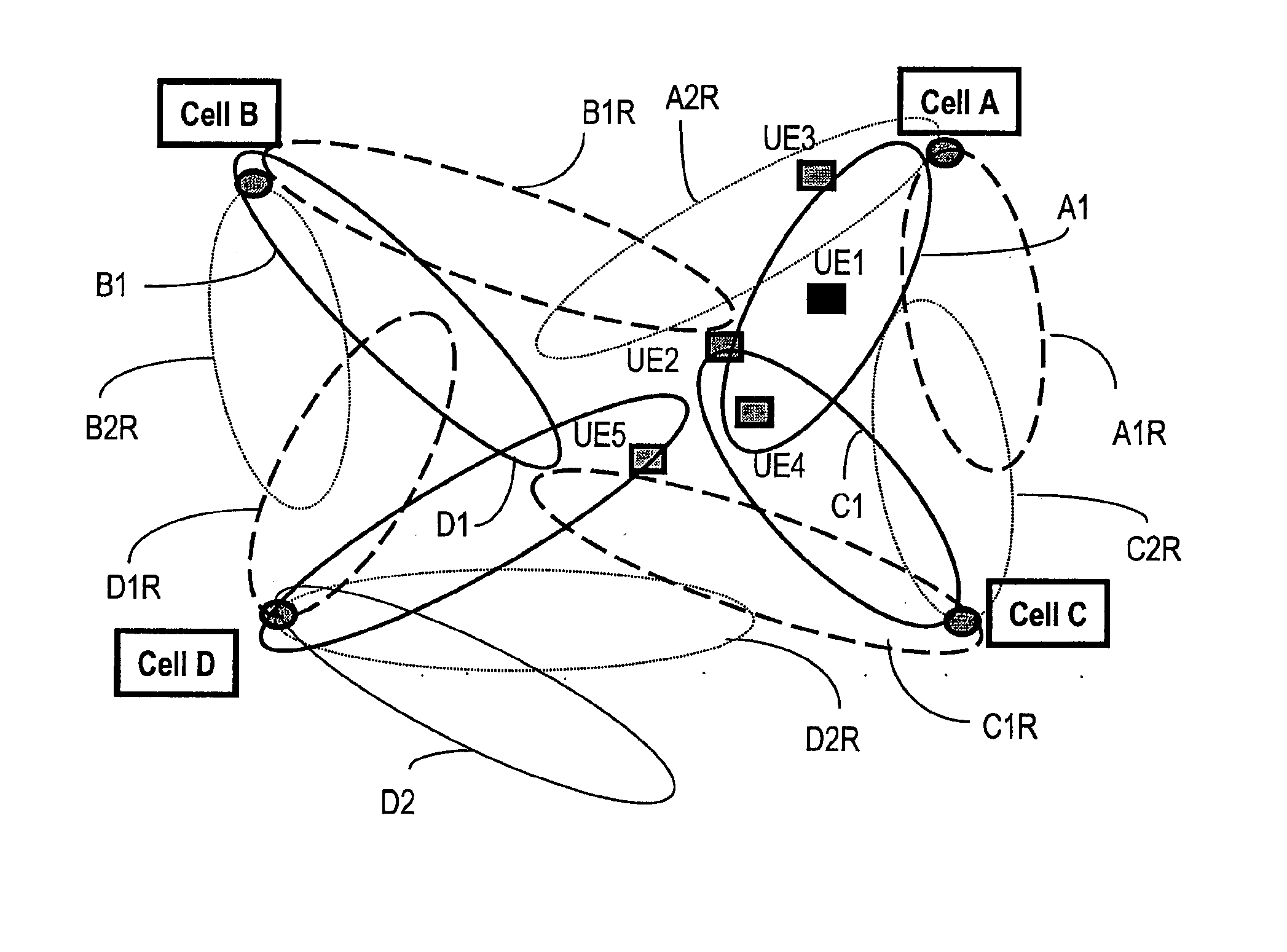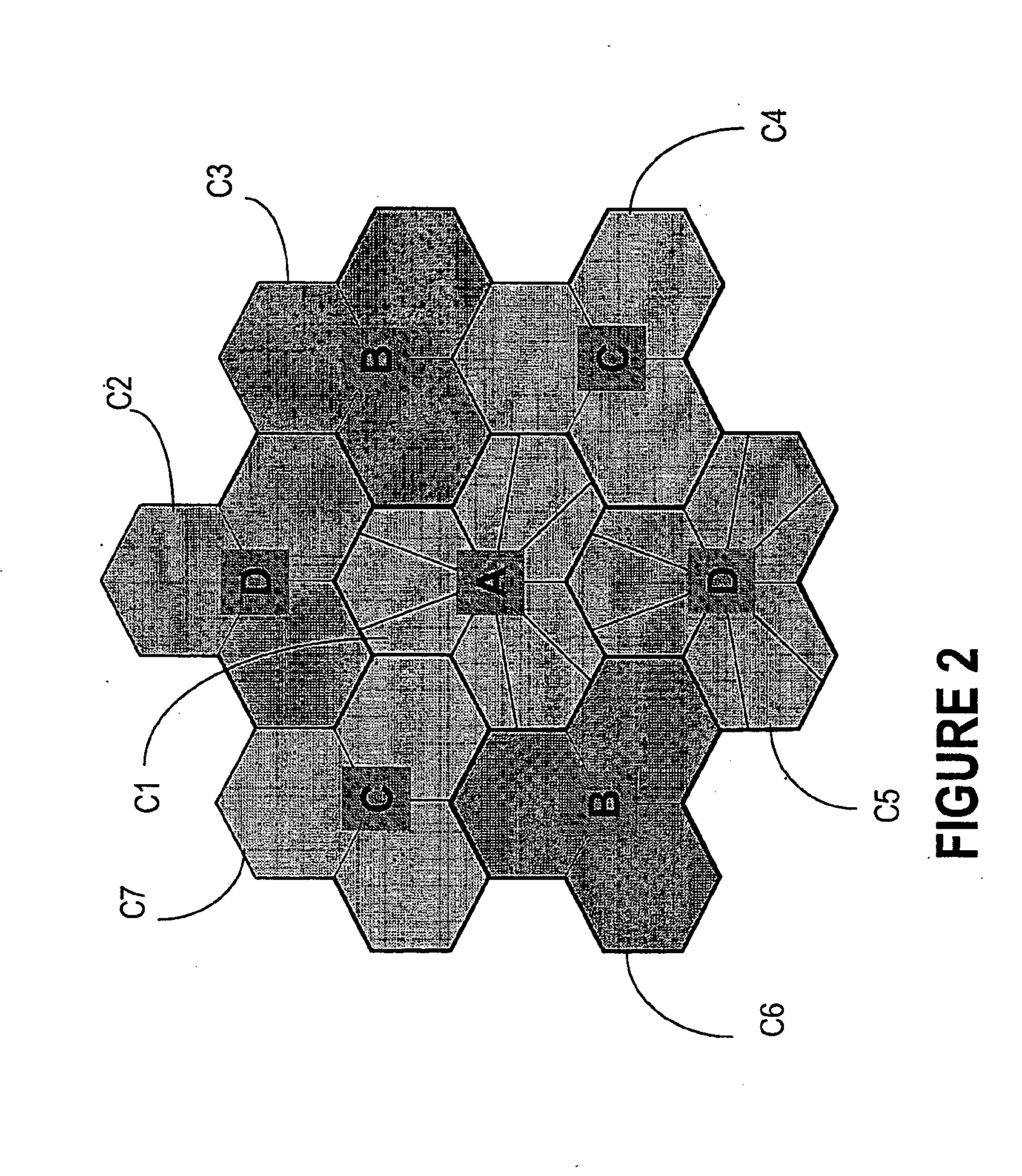Beam wobbling for increased downlink coverage and capacity
a beam and downlink technology, applied in the field of cellular radio system transmissions, can solve the problems of high cost of capacity for services requiring equal throughput, poor coverage of wireless systems, and needing extra level of coordination, so as to reduce signal interference and increase both coverage and capacity.
- Summary
- Abstract
- Description
- Claims
- Application Information
AI Technical Summary
Benefits of technology
Problems solved by technology
Method used
Image
Examples
Embodiment Construction
[0021] The invention will be described for the purposes of illustration only in connection with certain embodiments; however, it is to be understood that other objects and advantages of the present invention will be made apparent by the following description of the drawings according to the present invention. While a preferred embodiment is disclosed, this is not intended to be limiting. Rather, the general principles set forth herein are considered to be merely illustrative of the scope of the present invention and it is to be further understood that numerous changes may be made without straying from the scope of the present invention.
[0022] The present invention includes a beam rotation scheme for the downlink of a wireless system using multiple directional beams / antennas (e.g., tri-sector or 9-beam). Such rotations in the adjacent cells are done in different cycles so that the users in the overlapping areas observe reduced interference in some time slots for which the system can...
PUM
 Login to View More
Login to View More Abstract
Description
Claims
Application Information
 Login to View More
Login to View More - R&D
- Intellectual Property
- Life Sciences
- Materials
- Tech Scout
- Unparalleled Data Quality
- Higher Quality Content
- 60% Fewer Hallucinations
Browse by: Latest US Patents, China's latest patents, Technical Efficacy Thesaurus, Application Domain, Technology Topic, Popular Technical Reports.
© 2025 PatSnap. All rights reserved.Legal|Privacy policy|Modern Slavery Act Transparency Statement|Sitemap|About US| Contact US: help@patsnap.com



